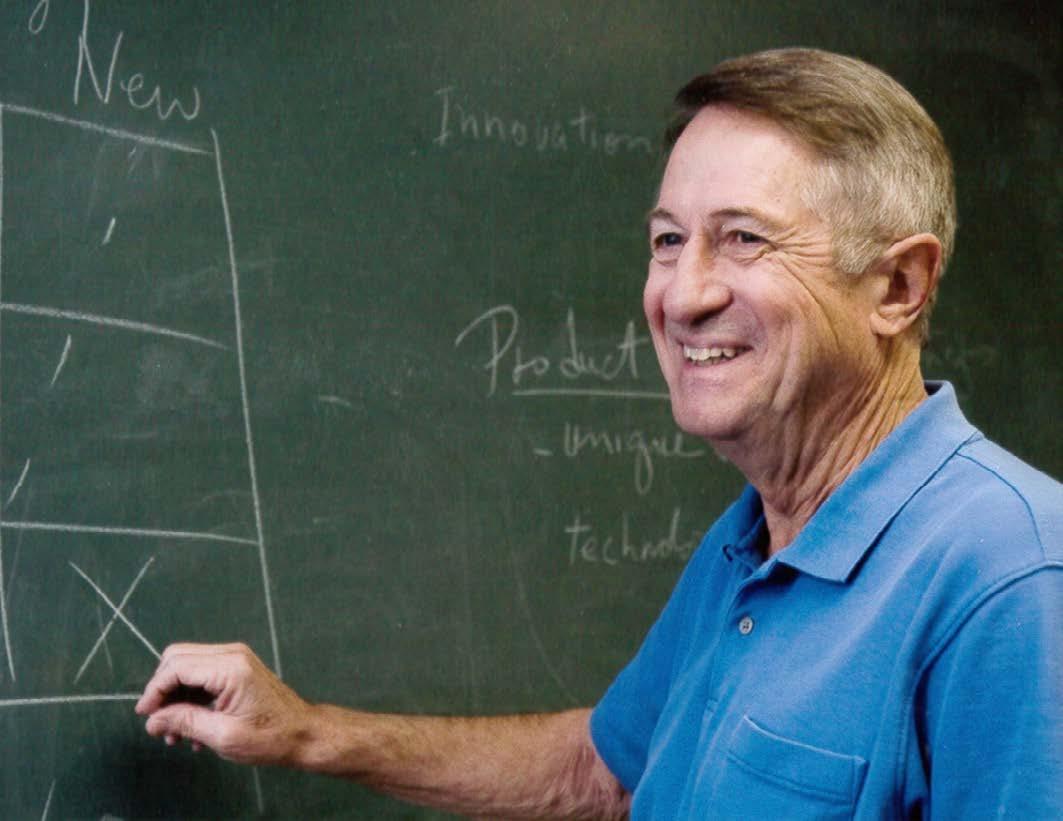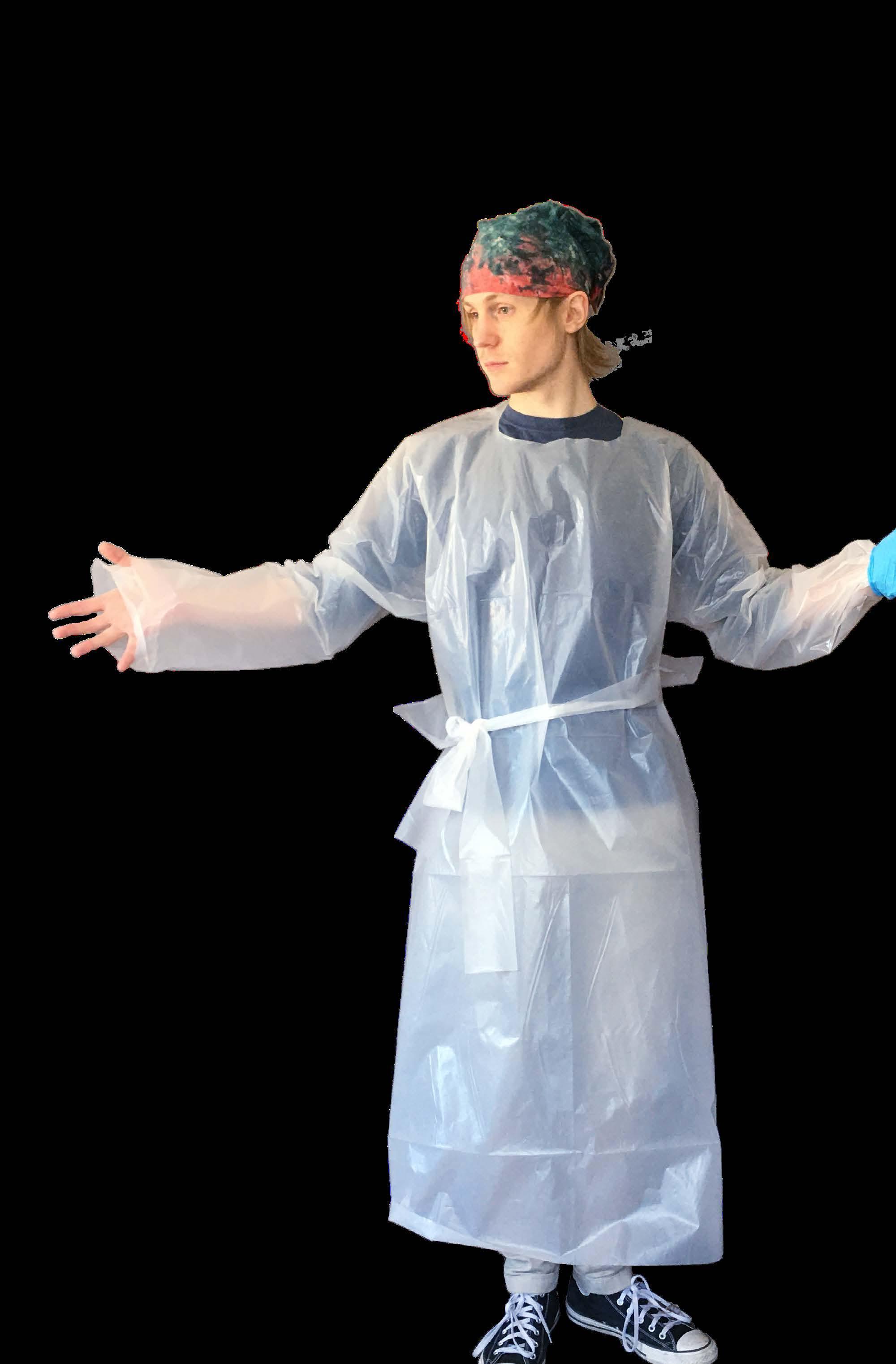
16 minute read
For Minnesota and the World
from Inventing Tomorrow Winter 2021
by College of Science and Engineering at the University of Minnesota
Since the coronavirus pandemic began in early 2020, it’s hard to imagine life without face masks, strictly outdoor dining, and virtual happy hours. Yet, questions still remain. Are we effectively maximizing the safety of our frontline workers? Is six feet always enough? How dangerous are indoor restaurants?
Scientific knowledge about the disease known as COVID-19 continues to evolve—and faculty from the College of Science and Engineering have evolved with it. From addressing personal protective equipment (PPE) shortages and safety regulations to grappling with a rapidly emerging mental health epidemic, CSE researchers are helping society to not only understand COVID-19 but to live with it.
FOR INNESOTA
AND THE
ORLD
Written by OLIVIA HULTGREN
A SWIFT RESPONSE
When the coronavirus hit in March 2020, shortages in medical equipment grew. Hospitals lacked sufficient ventilators to treat patients, and medical personnel lacked the PPE they needed to provide care safely. Faculty and industry leaders at the University of Minnesota’s Institute of Engineering in Medicine (IEM) started brainstorming.
“Professor David Odde (biomedical engineering) reached out to our industry advisory board because there was an urgent lack of PPE in the supply chain,” explained IEM director John Bischof. “Everybody hopped on a call and started talking about ways they could help.”
Formed in the 1990s along with the University’s Department of Biomedical Engineering, the institute has since evolved, bringing together U of M researchers in CSE and the Medical School to foster collaboration and improve healthcare. Bischof, both the Carl and Janet Kuhrmeyer Chair in Mechanical Engineering and the Medtronic-Bakken Endowed Chair for Engineering in Medicine, reports to the deans of both schools in his leadership role. As an engineer with projects in the Masonic Cancer Center, his work bridges both engineering and medicine.
Bischof, along with IEM clinician engagement faculty directors Will Durfee (mechanical engineering) and Brad Benson (medical school), began assembling teams to address COVID-related needs in the medical community. They worked closely with the vice presidents of supply chain management at M Health Fairview to determine where and what PPE was needed most. Within weeks, University researchers designed three different types of face masks, dubbed the MNmask, from repurposed filtration material. At the same time, a team in IEM’s Earl E. Bakken Medical Devices Center constructed a low-cost ventilator alternative for physicians to use.
By May 2020, an IEM team led by mechanical engineering professor Chris Hogan had developed a respiratory procedure box to protect healthcare providers treating COVID-19 patients and a phone booth-like structure to improve virus testing processes. Biomedical engineering students also produced
Fast, Simple PPE
A team of University of Minnesota biomedical engineering students designed and produced 350,000 hospital gowns for M Health Fairview employees in a matter of months—one of the many projects organized by IEM to provide personal protective equipment to health workers during the pandemic.
disposable protective gowns for health workers, of which 350,000 have now been made. And the list goes on—most of the designs are also available online (z.umn.edu/IEMcovid) for researchers and health professionals around the world to use.
According to Bischof, this swift, organized response to the coronavirus pandemic wouldn’t have been possible without IEM.
“There’s no other umbrella organization for biomedical engineering like this on campus that can do this,” he said. “It’s been a way to connect people and give a coherent response to COVID, because we can help engineers meet clinicians, we can help fund some of these initiatives, and we can connect to industry. We have enough resources that we can have multiple programs to serve faculty and do things that are bigger than individual research programs.”
Since March, IEM, in collaboration with the Minnesota Robotics Institute and the Clinical Translational Science Institute, has given out about $300,000 in grants for U of M faculty to work on COVID-related issues. Thanks to its umbrella structure, grant-writing services, and wide-ranging connections on both the medical and engineering fronts, the institute allows researchers to collaborate more efficiently and effectively on projects and writing grants.
“We faculty are hired into departments to focus on specific research, teaching, and service. While this focus creates individual excellence in faculty, it does not always facilitate larger initiatives,” Bischof said. “We’re in a moment right now with COVID where we can focus on and support larger initiatives, build teams, and work together to build community in academics. I think IEM is the ideal vehicle for that.”
Year-round inspiration
The Institute for Engineering in Medicine’s commitment during the pandemic spans even further than medical devices and PPE. Its Inspire Conference, which has engaged 400-500 high schoolers in STEM annually since 2018, took place virtually in November.
The event offered interviews and discussions with leaders of various IEM COVID-19 projects. It will also be expanded into a more robust Inspire Program led by U of M faculty Rhonda Franklin (CSE, pictured here) and Chris Pennell (Medical School), who both received IEM Abbot Professorships in Innovative Education and are working with IEM staff lead for Inspire Ken Rosen to support these outreach efforts. Instead of just an annual conference, students throughout Minnesota will soon be able to participate in year-round activities such as in-person seminars, laboratory training, and visits to research centers on the Twin Cities campus.
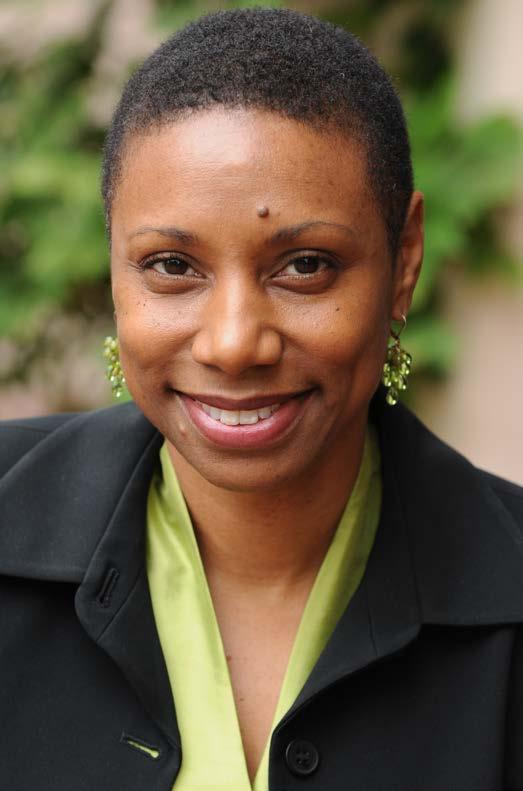
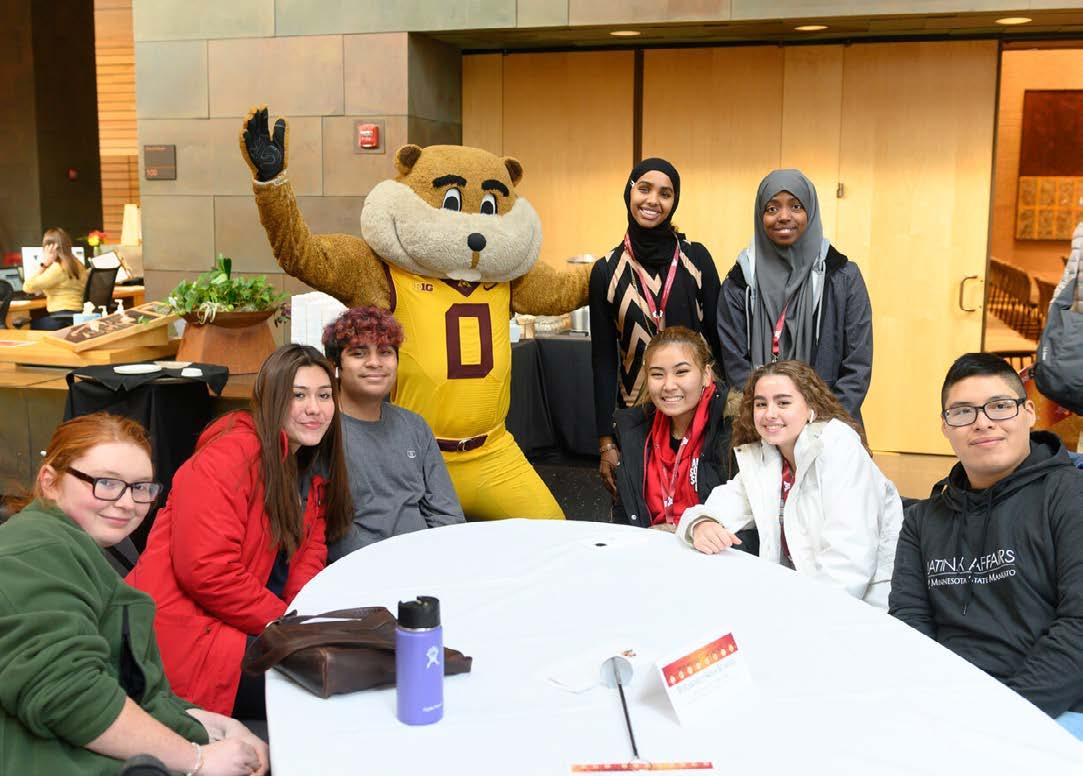
“We’re trying to inspire, literally, students to engage with and stay in STEM,” said IEM director John Bischof. “I’m really excited about where Rhonda, Chris, and Ken are taking this. They are turning Inspire into a whole program, connecting with our vibrant urban, rural, suburban, and even tribal communities and collaborating with existing University of Minnesota-based groups to grow this program.”
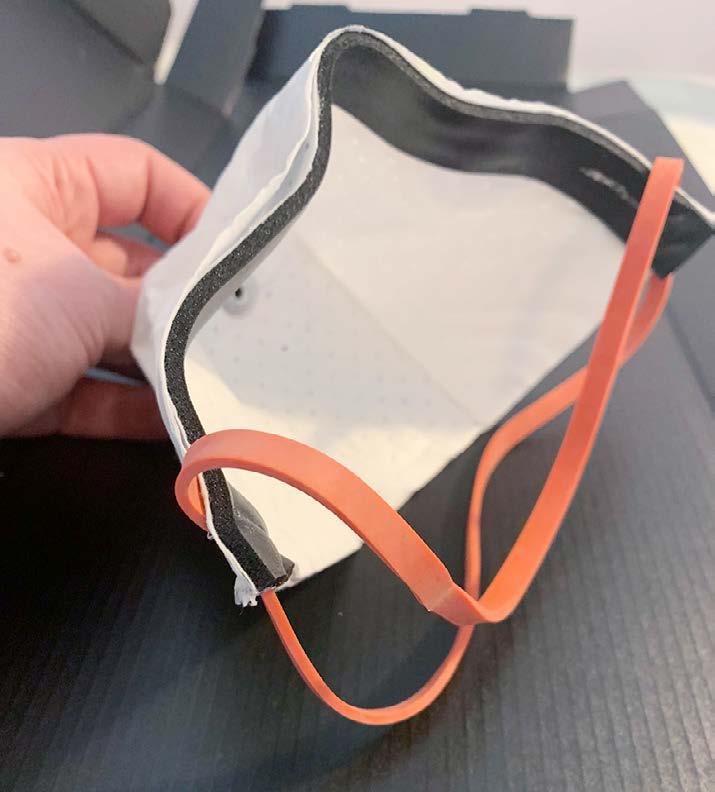

All photos courtesy of Institute of Engineering in Medicine
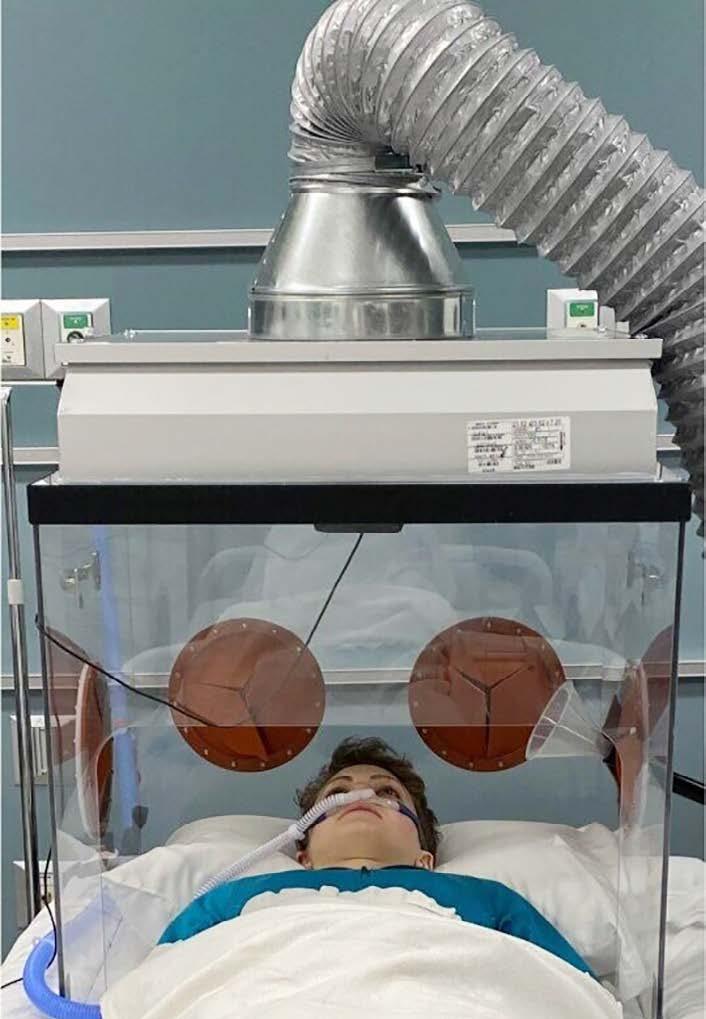
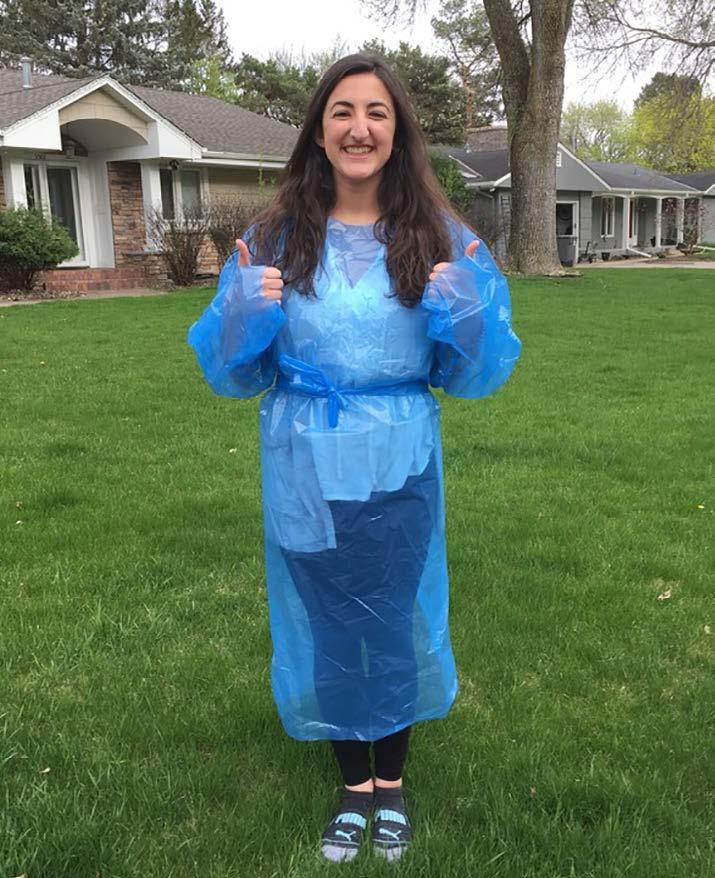

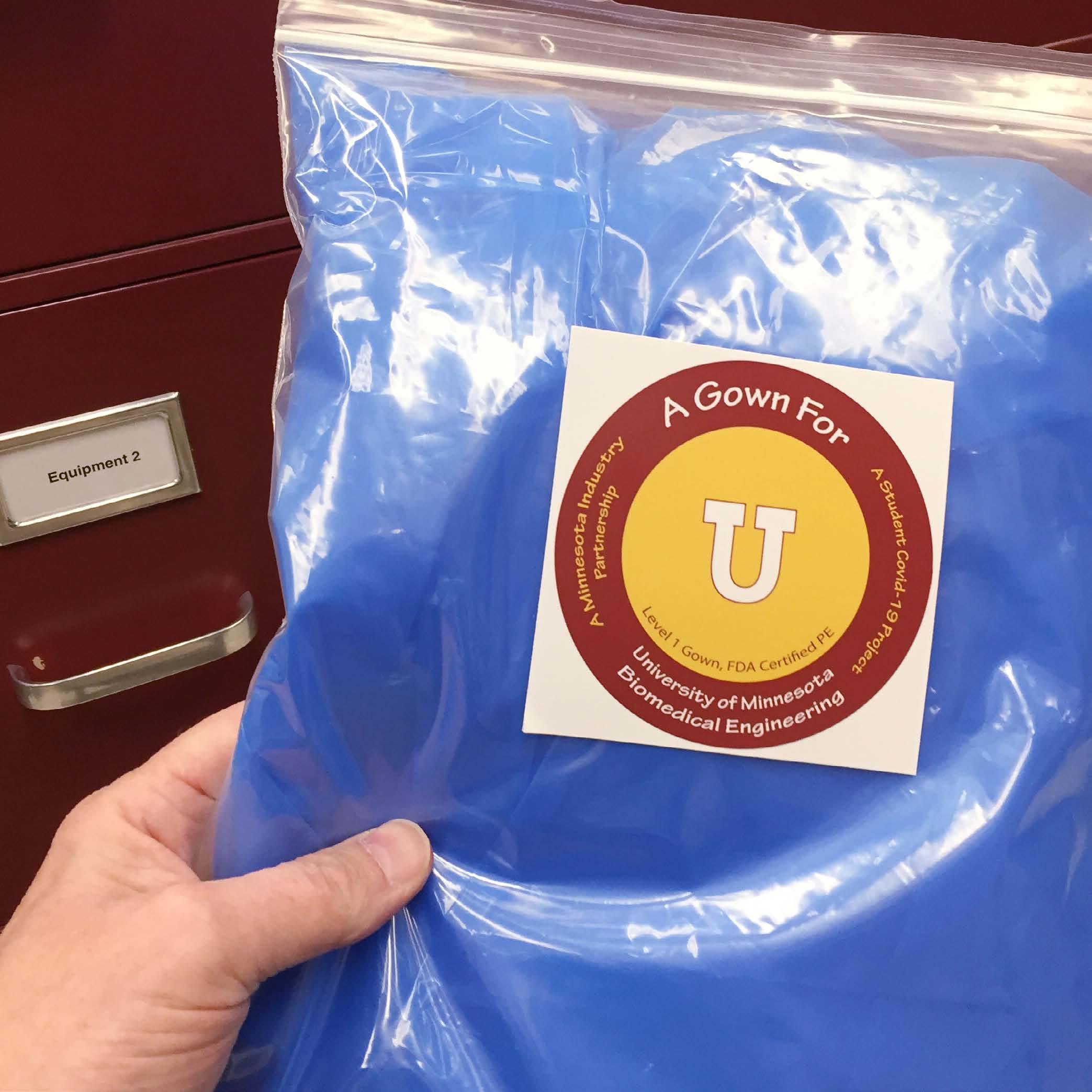
A team of students is working with assistant professor Evan Suma Rosenberg on more immersive options to video conferencing. One result is gophervr.org, a virtual reality (VR) chatroom (top right) that users can visit with a VR headset (bottom right), smartphone, or desktop. AVATARS TO THE RESCUE
The pandemic has been hard on not only our physical health but also our mental wellbeing. The Centers for Disease Control (CDC) reported in June 2020 that more than 40 percent of adults in the United States experienced symptoms of at least one adverse mental or behavioral health condition since the outbreak began. Anxiety disorder was three times more common in 2020 than in 2019, and depression was four times more prevalent.

According to CSE’s Evan Suma Rosenberg, virtual reality (VR) might be able to help. Suma Rosenberg is an assistant professor in the Department of Computer Science and Engineering and heads up its Illusioneering Lab, which focuses on immersive technologies like VR and augmented reality.
“What can virtual reality do to help people, improve our lives, and improve our work in a situation where our social lives are so degraded?” he asked. “Virtual reality may not be the solution to all the problems of the world, but can it play a role here?”
Funded by a grant from the University of Minnesota Medical School, Suma Rosenberg and his Ph.D. student Danhua Zhang spent the summer researching more immersive alternatives to video conferencing. The result was gophervr.org, a web-based VR chatroom where students, faculty, and staff can interact remotely—no six-feet rule required.
“Everyone is represented with customizable avatars,” Suma Rosenberg explained. “It enables other types of
interactions that you can’t really get in something like Zoom, such as looking directly at the person you are talking with and pointing or gesturing to objects of interest in a shared 3D space. And because you have spatial audio, the closer you get the louder the audio gets—which means if two people want to just talk amongst themselves, you can organically move away and have a side conversation.”
The web infrastructure can house up to 20 people per virtual room, and it isn’t limited to those with VR headsets. Users can join with their smartphones or computers too. Although the experience for phone or desktop users is more akin to a first-person video game, they can still move around in the 3D space and benefit from spatial audio.
Suma Rosenberg said that virtual reality can provide a more enriching, immersive experience for social interaction.
“The technical term for it is the sense of presence,” he said. “It’s the subjective experience of being there and being transported to a different place. Looking at something on a computer screen can be engaging, but virtual reality can elevate this feeling to a whole new level, which can cause people to respond to the virtual experience more like they would in the real world.”
This summer, Suma Rosenberg organized a National Science Foundation (NSF) undergraduate research symposium with gophervr.org, hosting 150 college students nationwide. He hopes the virtual space will continue to be used during the pandemic, whether by student groups or for work meetings across the U of M.
All photos by Tongyu Nie

Illustration by CEDRIC HOHNSTADT

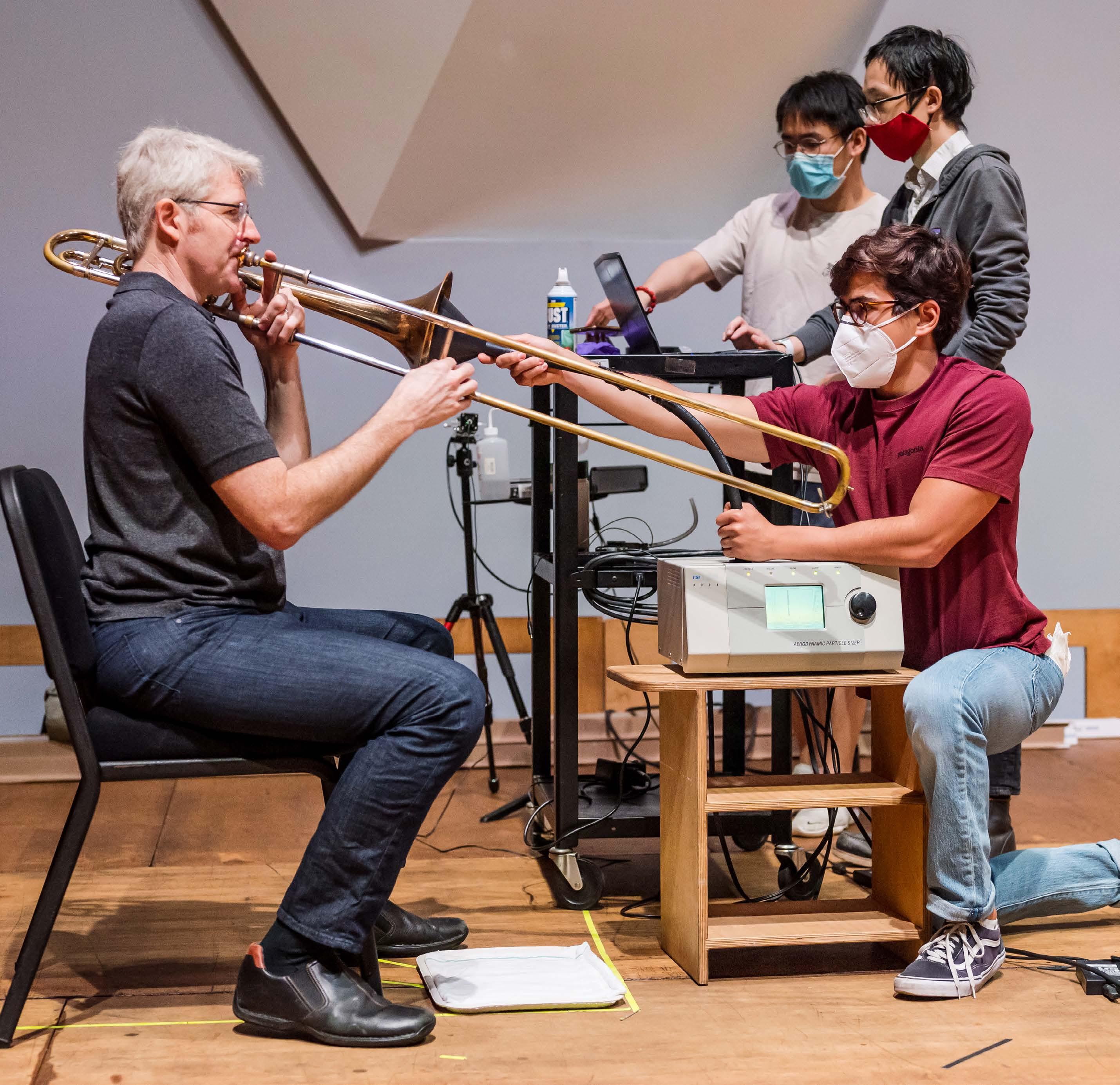
Minnesota Orchestra principal trombone R. Douglas Wright getting the aerosol concentration of his instrument measured by mechanical engineering Ph.D. students Rafael Placucci (holding an aerodynamic particle sizer), Siyao Shao, and Ruichen He (far right).
Suma Rosenberg is also working with associate professor Richard Landers in the College of Liberal Arts’ psychology department to study the impact of VR-facilitated social interaction on users’ mental and emotional health. Then, they hope to see whether VR can also influence the public’s compliance of social distancing regulations. Their collaboration is funded by an NSF COVID-19 RAPID grant.
“The real thing I want to look at here is whether this way of being able to interact with people virtually will actually elevate moods and fill some of those social needs,” Suma Rosenberg said. “VR may not be a perfect solution, but it can get closer to some of the real world social experiences that we are currently not able to have safely.”
THE AIR WE BREATHE
Restaurant booths divided by Plexiglass, masked trips to the grocery store, socially distanced students in sanitized classrooms—these images have grown more and more familiar as society struggles to cope with the coronavirus pandemic. Yet, the question remains: how dangerous are these indoor activities? CSE faculty members Jiarong Hong and Suo Yang aim to find out.
Since the pandemic began, the pair have been analyzing how the coronavirus can spread indoors, from classroom settings to the Minnesota Orchestra Hall. Their findings have provided insight for businesses and schools as they reopened this fall and helped the Minnesota Orchestra devise a plan to maximize the safety of their musicians onstage. “You have heard a lot about regulations of social distancing in different places, but they’re all talking about six feet,” said Hong, an associate professor in the Department of Mechanical Engineering. “There’s been no quantification of how this rule should be adjusted under different indoor environments. Social distancing of six feet might not apply because it depends on how the aerosol particles accumulate and are transported in that space.”

Scientists largely agree that the main culprits of COVID-19 transmission are aerosols, which are ejected from our mouths when we exhale or speak. When an infected person does this, the SARS CoV-2 virus can hitch a ride on those aerosols as they land on nearby surfaces or are inhaled by another person. In the CSE researchers’ first study, Hong and his team of graduate students measured the concentration of aerosols generated by people breathing and speaking. Then, Yang used that data to produce simulations of how those aerosols would travel throughout different indoor spaces—an elevator, classroom, and supermarket. They found that the strength and placement of vents plays a key role in how the particles disperse and deposit on the floor and walls.
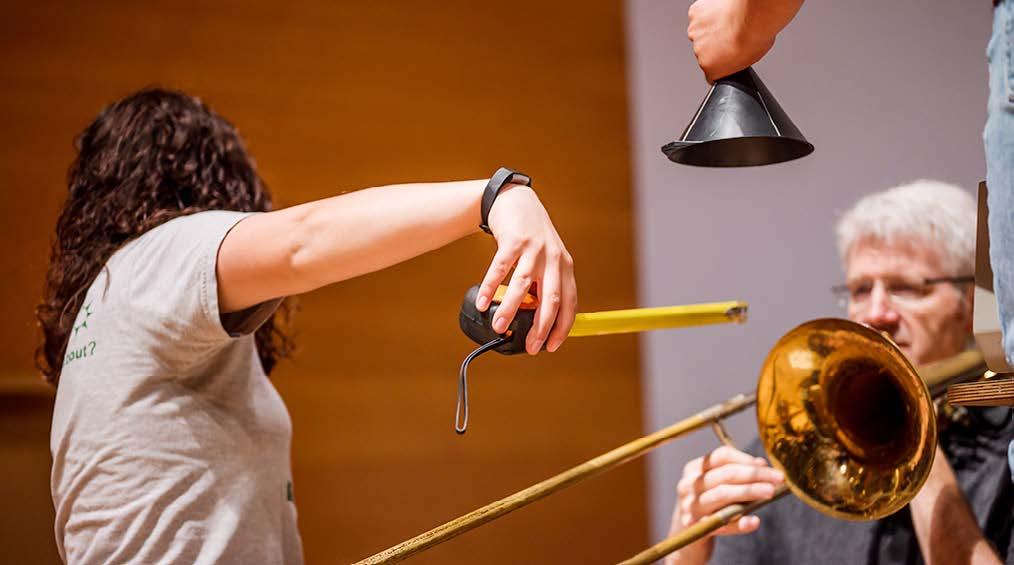

“We learned that ventilation matters a lot,” said Yang, an assistant professor of mechanical engineering. “You need to do proper ventilation, otherwise it can make things worse. The location, the distribution of the vents all matters.”

Shortly after they began this work, the researchers were connected with the Minnesota Orchestra through Medical School colleague John Hallberg. The orchestra wanted to know how dangerous it would be to play instruments as a group onstage, and what they could do to mitigate this risk.
Hong and his team got to work. They organized on-campus experiments to measure the aerosol concentration produced by 15 musical instruments, and eventually conducted tests in Orchestra Hall to visualize where the aerosols traveled after they exited the instruments. Moderna, Inc., a Cambridge, Massachusetts-based biotech upstart led by Stéphane Bancel (chemical engineering M.S. ’95), was one of the first companies in the world to react to the COVID-19 outbreak. Its Messenger RNA (mRNA) vaccine entered Phase 3 clinical trials in July. By November 16, the first interim analysis showed an efficacy of 94.5 percent. For the latest developments or to watch a video of how this mRNA works: The researchers also found that bell barriers (the technical term for instrument masks) and portable air purifiers could further mitigate the spread of particles.
Their findings were crucial in helping the orchestra develop its plan for fall, which involves COVID testing, light quarantining, musicians wearing masks, physical distance between the musicians, and the potential use of bell barriers and air purifiers onstage.
Now, Yang’s lab is working to create simulations based off Hong’s initial measurements of aerosol concentration Bancel is a former student of professor Wei-Shou Hu. When asked what he remembers about the multilingual Bancel, Hu said, “Stéphane was very creative and charming. He returned to the U to give the Fredrickson Lecture to students, faculty and staff five years ago when he had just started Moderna. He convinced many that he would take it to fruition, as he has accomplished now.” Hu, who still stays in touch with Bancel, is also busy with COVID-19 work. He is collabofrom instruments. His goal is to show how the aerosols would travel throughout the auditorium, and where audience members would be more at risk if the orchestra held a socially distanced performance.
“I think that indoor air quality overall is a very important issue, but it’s been heavily ignored in the past,” Hong said. “That’s why this research is important, so that people understand the importance of ventilation. It’s not just COVID, but in the future, other infectious airborne diseases could also be
Alumnus leads vaccine development
z.umn.edu/modernamilestones associated with indoor air quality.” rating with the University of Minnesota Medical School to create a cell line that produces SARS CoV-2 spike proteins.
“Engineers have a mindset of systems,” Hu said. “We integrate. We synthesize. And that perspective is really important for translating scientific discoveries to something that directly impact the society.”
Learn more about Hu’s research: z.umn.edu/hucovidstudy
Air filtration and your home
CSE professor and aerosol expert Chris Hogan weighs in
Interview by Olivia Hultgren
When mechanical engineering professor Chris Hogan began studying aerosols in 2003, the majority of researchers in the field were focused on how the small particles impact outdoor air. But after the pandemic, things changed. Hogan, who is editor-in-chief of the Journal of Aerosol Science, has been studying the impact of recirculating air purifiers on virus aerosols and how they disperse throughout indoor spaces.
We met him via Zoom for tips on staying safe—at home and in the office— this winter.
Why are air circulation and filtration important in reducing the spread of COVID-19?
When we say air circulation, we typically mean ventilation, and ventilation doesn’t just mean a fan mixing the air around. It means bringing new air into a space and taking the air that we’ve been inhaling and exhaling out as quickly as possible. This is important, not just for COVID but for human health in general, because it keeps the CO2 levels low.
But if there’s anything infectious that can be spread—through what is called an aerosol route, which just means that the particles or droplets expelled are small enough to stay in the air—we need to clear those out. And the quicker we can do it, the more we can mitigate risk of infection. Bringing clean air in and taking air out is where filtration comes in. [Filters] will collect particles because the particles really can’t pass through them. They just stick and stay there.
What are some strategies we can use to mitigate COVID in our homes?
The number one strategy is to not bring people into your home because minimizing face-to-face contact is the best way to stop the spread of COVID-19. But, you can try to increase the air change rate in your home, which is the number of times per hour that the air in a room is refreshed.
A good modern office will probably have around five, maybe upwards of seven, air changes per hour. Most homes do have some sort of recirculating air system for ventilation, but probably not a great level of control on it, and most homes just don’t have the pump capacity to install high-efficiency filters directly in the air handling system.
If you’re in a situation where you have someone in your home who you’re not commonly exposed to, giving that air a good path to enter and exit by opening multiple windows will give you a really high ventilation rate, actually. It’s hard to beat that. Of course, this is harder to do in the winter, and you may want to look into getting a recirculating air purifier to increase the ventilation rate in a certain room.
How effective are recirculating air purifiers in rooms?
The technology that goes into them is usually very efficient in removing particles and droplets from an aerosol. In general, HEPA filters, or High Efficiency Particulate Air filters, have to undergo certain testing to even have that rating, which means that they are 99.97 percent efficient or better. With a recirculating air purification system of a high enough flow rate, without leaks and with a good filter, you can increase the air changes per hour in the room you place it in.
Four air change rates per hour means 98 percent of the particles originally in the room are removed over that hour, so that’s pretty good. If you can get to that level with the air purifier, that helps—and that should be almost additive with the natural air change rate.
Where it wouldn’t help is if you were in a big open space. What will help there is exploiting that open space to keep your distance from the person and then minimizing exposure time. The volume there is so big that [using air purifiers] is a drop in the bucket. It’s not going to do very much.




